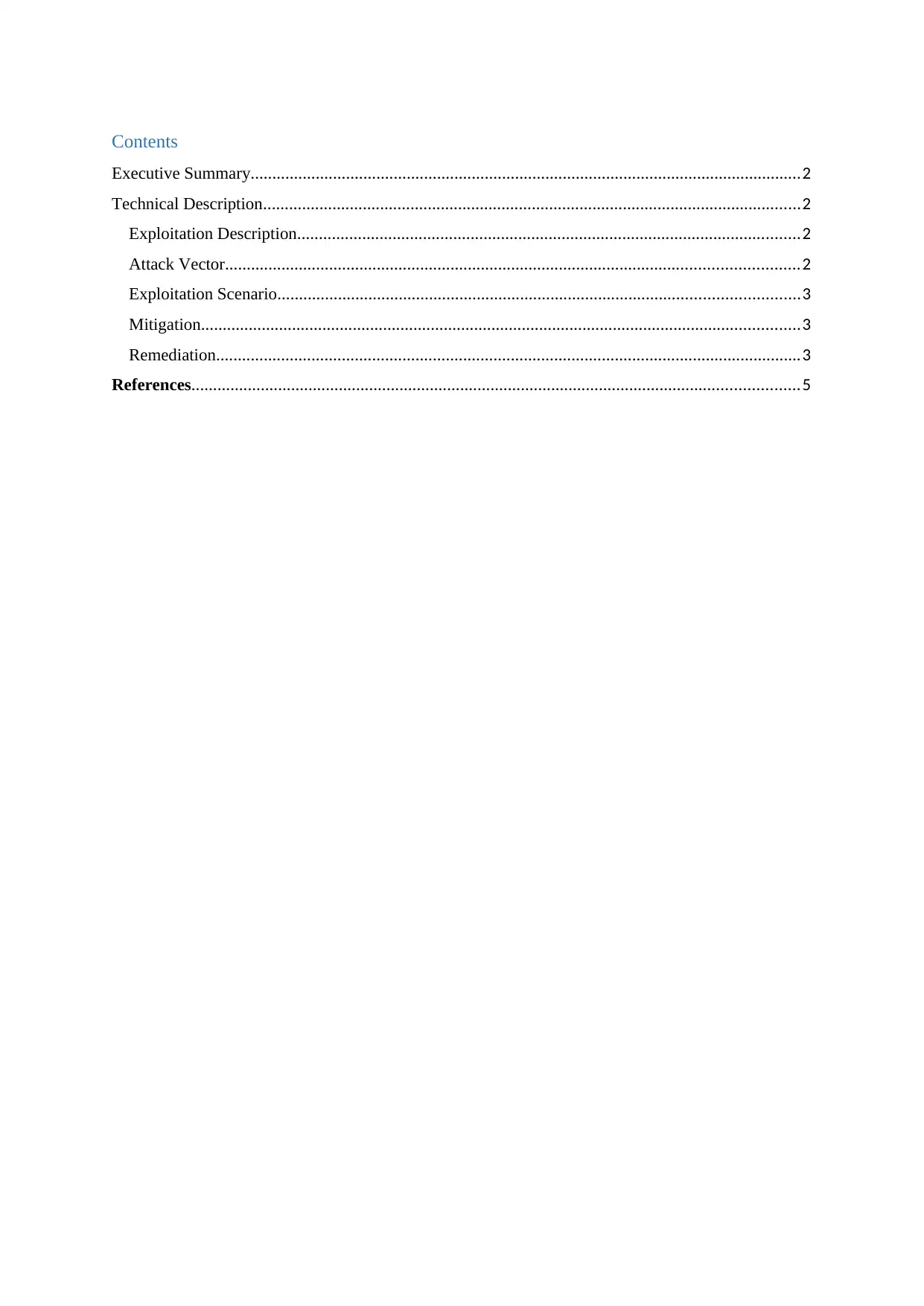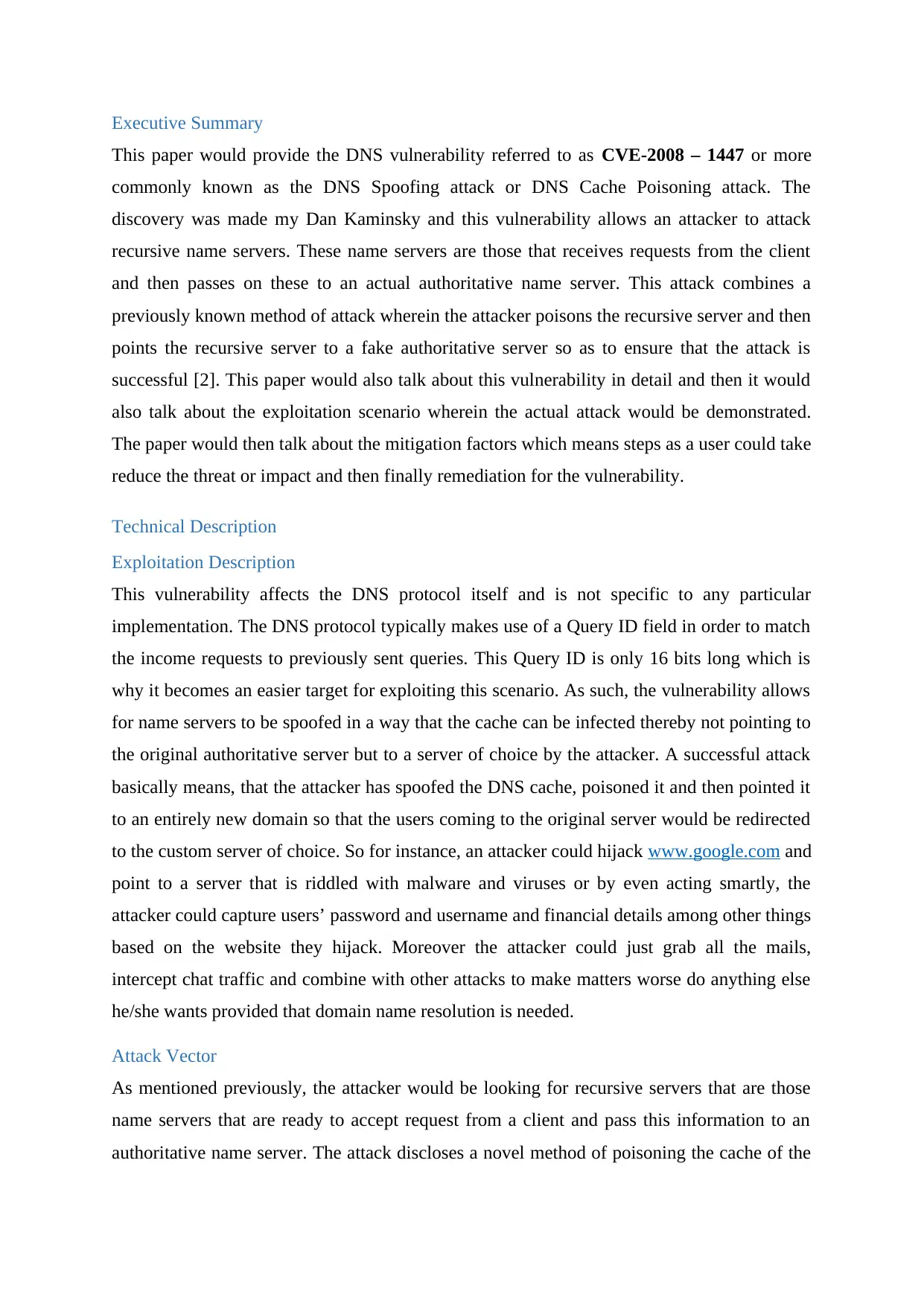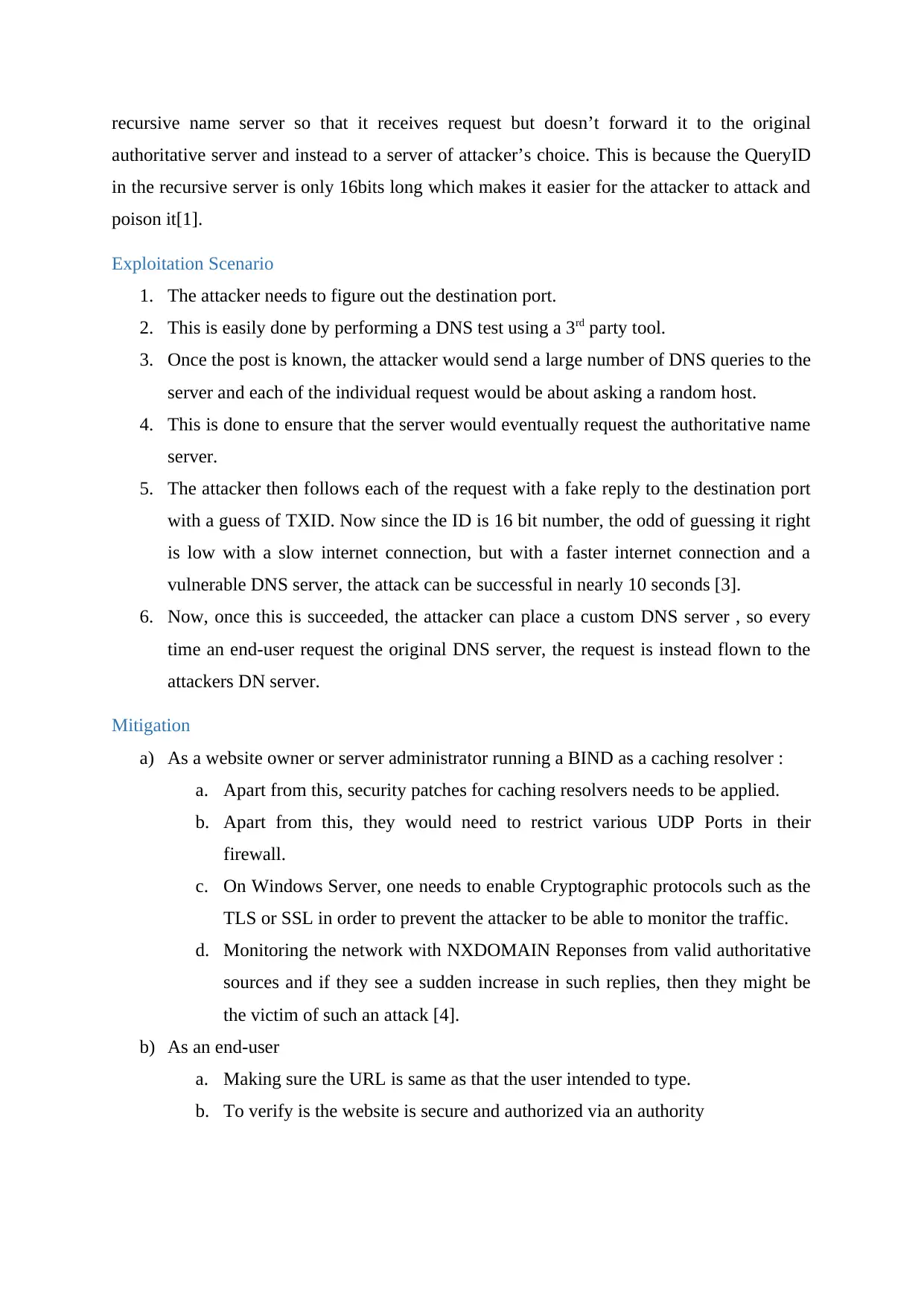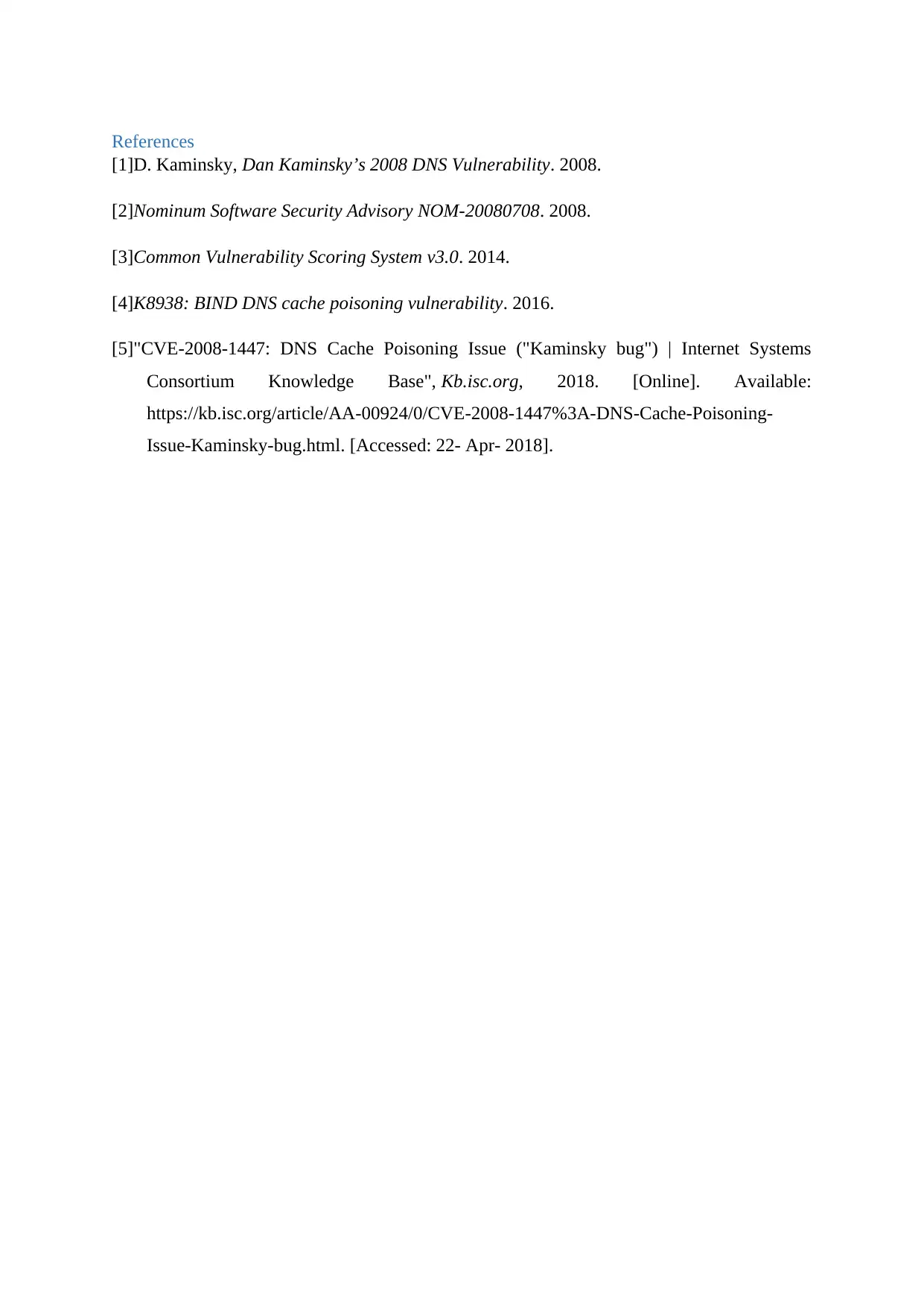Detailed Report on the DNS Spoofing Attack (CVE-2008-1447) Exploit
VerifiedAdded on 2019/09/20
|5
|996
|219
Report
AI Summary
This report provides a detailed analysis of the DNS spoofing attack, also known as CVE-2008-1447 or DNS cache poisoning, a vulnerability discovered by Dan Kaminsky. It targets recursive name servers, allowing attackers to redirect users to malicious websites. The report explains the technical aspects of the attack, including the exploitation of the 16-bit Query ID field. It outlines the attack vector, exploitation scenarios, and potential impacts such as malware distribution and data theft. The report further discusses mitigation strategies for website owners, server administrators, and end-users, including security patches, firewall configurations, and verification of website security. Finally, it recommends remediation through the adoption of DNSSEC and the installation of security patches. The report draws upon various sources, including research papers and security advisories, to provide a comprehensive understanding of the vulnerability and its countermeasures.
1 out of 5









![[object Object]](/_next/static/media/star-bottom.7253800d.svg)